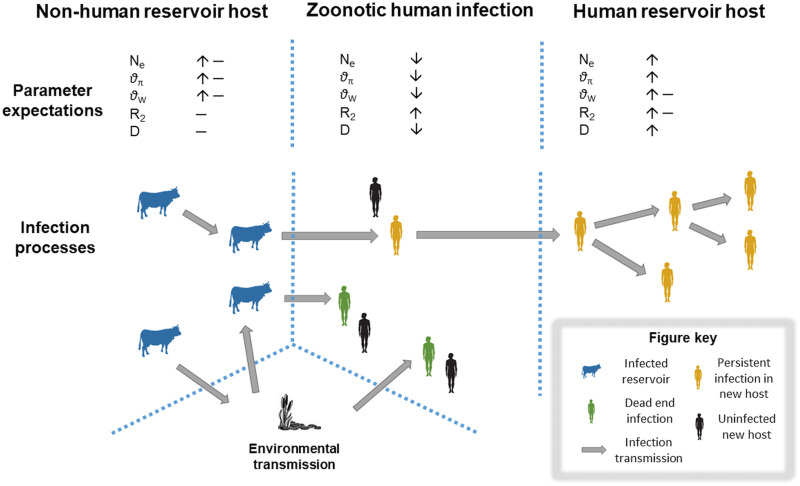Fig. 1.
Population and genetic parameter expectations during Cryptosporidium host shifting. Key transmission pathways show non-human reservoirs (blue) infecting each other and the environment through oocyst shedding. Cross-species transmission and host shifting occur through direct and indirect transmission (e.g. via the environment), mostly leading to dead-end infections (green). Subsequent establishment in new hosts with possible adaptation through ongoing transmission may occur (yellow). Transmission between individuals of the new host is necessary to establish long-term associations that characterize a successful host shift, in contrast to occasional spillover pathogen infections in the new host. The expected ranges (e.g. ↑ = high, ↓ = low, – = no change, ↑– = high or no change) for population genetic parameters are shown above each scenario; Ne – effective population size; θπ – nucleotide diversity; θW – Watterson's theta; R2 – Ramos-Onsins and Rozas' population growth test; and D – Tajima's D.

